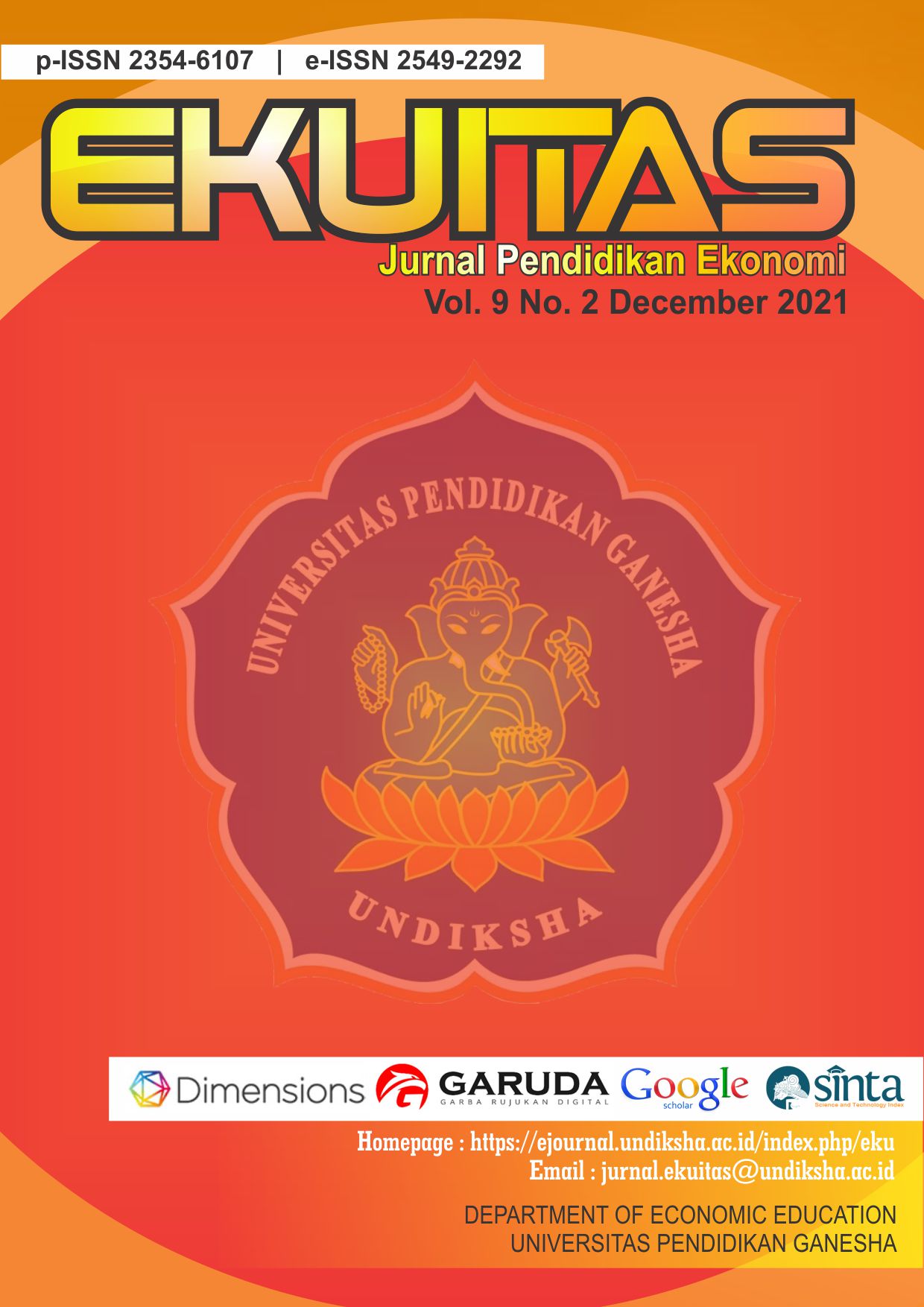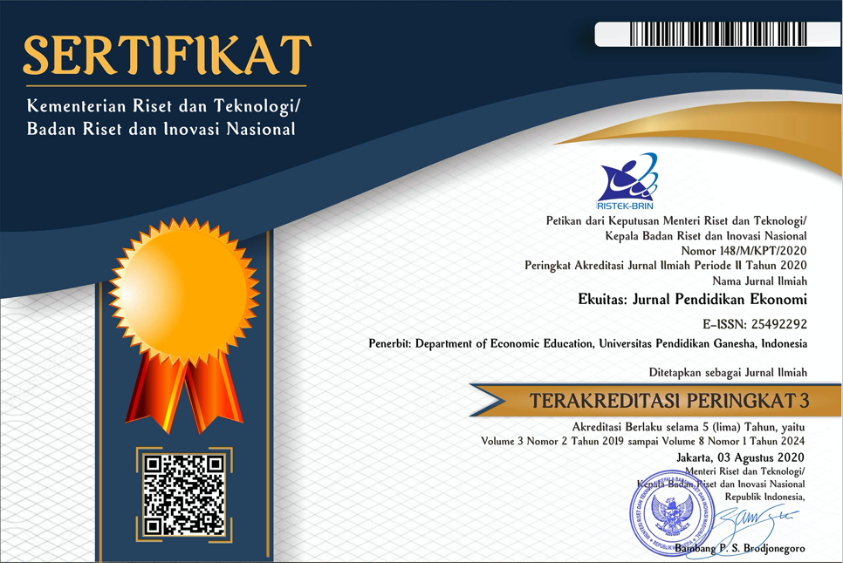The Using of E-module as Teaching Materials Development to Improve Students’ Learning Outcomes at SMA Swasta BPI Paluh Kurau
DOI:
https://doi.org/10.23887/ekuitas.v9i2.34122Keywords:
borg & gall model, e-module, teaching materialsAbstract
The development of teaching materials e-module is an effort to train students to learn independently. This research focused on the feasibility level of developing teaching materials e-module that were applied to class XI students for the 2020/2021 academic year at SMA Swasta BPI Paluh Kurau Hamparan Perak District. A quantitative method was used in this study. The population was all students of class XI at SMA Swasta BPI Paluh Kurau, Hamparan Perak District. To determine the feasibility level, a comparison was made between the experimental class and the control class. The data source results from a questionnaire given to the experimental class to see using e-modules on economic subjects, student test results, and experts. Validation test sheets include e-module design, material experts, and media experts. The procedures and steps of this research used the research model of Borg & Gall (2007: 589), which produces learning products. The result shows that the use of e-modules was in the good or feasible category for use. Overall, learning using e-modules is quite exciting and fun and exciting and easy to use by students. With e-modules, students can become more independent and accelerate learning but still need teacher guidance to have better understand phenomena and language problems in questions in the module.
References
Arikunto, S. (2014). Prosedur Penelitian Suatu Pendekatan Praktik. Rineka Cipta.
Borg, W. R., & Gall, M. D. (2007). Educational research: an introduction. Longman Inc.
Hutahaean, L. A., Siswandari, & Harini. (2019). Pemanfaatan E-Module Interaktif sebagai Media Pembelajaran di Era Digital. Seminar Nasional Teknologi Pendidikan, 298–305.
Imansari, N., & Sunaryantiningsih, I. (2017). Pengaruh Penggunaan E-
Modul Interaktif terhadap Hasil Belajar Mahasiswa pada Materi Kesehatan dan Keselamatan Kerja. VOLT - Jurnal Pendidikan Teknik Elektro, 2(1), 11–16.
Lestari, & Parmiti. (2020). Pengembangan E-Modul IPA Bermuatan Tes Online untuk Meningkatkan Hasil Belajar. Journal of Education Technology, 4(1), 75–81.
Lubis, T. (2019). Participant Structure in Learning English: Linguistic Anthropology Approach. 4th Annual International Seminar on Transformative Education and Educational Leadership (AISTEEL 2019), 571–573.
Mulyadi. (2011). Penelitian Kuantitatif dan Kualitatif serta Pemikiran Dasar Menggabungkannya. Jurnal Studi Komunikasi Dan Media, 15(1), 127–138.
Putra, K. W. B., Wirawan, I. M. A., & Pradnyana, G. A. (2017). Pengembangan E-Modul Berbasis Model Pembelajaran Discovery Learning pada Mata Pelajaran “Sistem Komputer” untuk Siswa Kelas X Multimedia SMK Negeri 3 Singaraja. Jurnal Pendidikan Teknologi Dan Kejuruan, 14(1), 40–49.
Sidiq, R., & Najuah. (2020). Pengembangan E-Modul Interaktif Berbasis Android pada Mata Kuliah Strategi Belajar Mengajar. Jurnal PENDIDIKAN SEJARAH, 9(1), 1–14.
Sudjana, N. (2014). Dasar-Dasar Proses Belajar Mengajar. Sinar Baru Algensindo.








